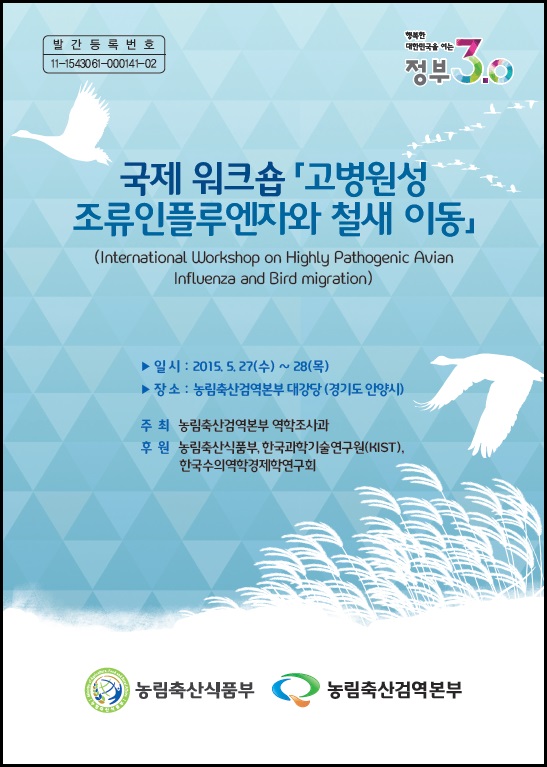by EAAFP Secretariat
International Workshop on Highly Pathogenic Avian Influenza and Bird Migration was held from 27 to 28 May 2015 in Anyang, Republic of Korea.
Opened by the Commissioner and General Director of Animal and Plant Quarantine in Korea, this workshop brought together Japanese experts – a representative from FAO (Dr Kenjiro Inui), Dr Yoshihiro Sakoda (Hokkaido University), Dr Toshiyuki Tsutsui (Director of National Institute of Health, Japan), Dr Takahiro Kitano (Ministry of Agriculture, Forestry and Fisheries, Japan) and Korean researchers – 50 people from Animal and Plant Quarantine Agency, as well as veterinarians from Konkuk University, Kangwon University, Chungbuk National University, Chungnam Veterinary Institute, Korea Rural Economic Institute and National Institute of Environmental Research and Korea Institute of Environment and Ecology. Dr Judit Szabo from EAAFP gave a presentation “The role of migratory waterbirds in the spread of avian influenza: Blaming the victim?”
Participants discussed global patterns of AI outbreaks in wild birds and domestic poultry, different virus strains and their pathogenicity. All experts agreed on the importance of biosecurity, early warning systems and monitoring in wild birds as well as domestic poultry and the dangers of immunisation.
Japan introduced its system of surveillance in wild birds (mostly fecal samples – 7,500 in 3 months) as well as their biosecurity measures and farmer education seminars about quarantine, on-the-spot inspections, disinfection and the importance of early reporting, as well as a very good compensation system. The number of farms has decreased in the last 15 years while the number of chickens per farm increased from 30,000 to up to 60,000. They also discussed problems of biosecurity of free-range poultry, such as turkeys in the USA or ducks in Southeast Asia. However, small scale farms never get AI in Japan.
Questions included how to encourage reporting by farmers, the difference between passive and active sampling, how to change farmer behaviour to minimise cross-transmission between farms and how the virus is evolving inside farms.
In Mongolia wild birds are showing signs of immunity, while in Korea wild birds are getting more sick. Even though number of chickens has increased in Mongolia over the last couple of years, it is still less than 1 million in total for the whole country, equivalent to the size of one farm in Korea.
Report of the workshop is available here
Visit EAAFP Avian Influenza Working Group page: here





